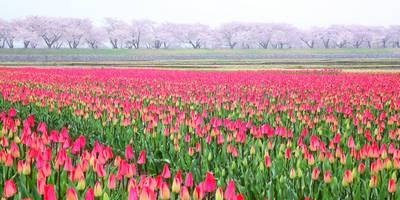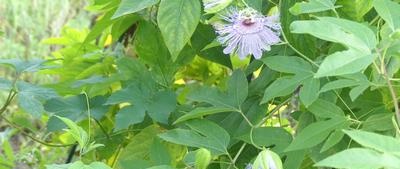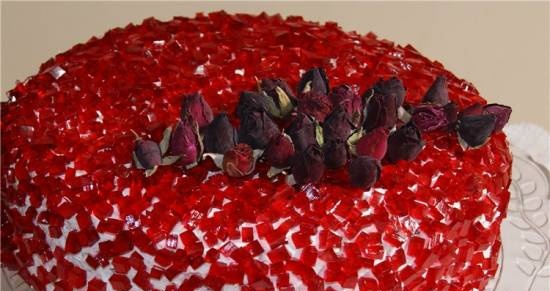|
 The sun's rays travel a long way from the sun to our planet. But they, high-speed, need only about 8 minutes to cover the distance of 150 million km. Getting on the ground, they warm it, accumulating in green plants, give rise to life. The sun's rays travel a long way from the sun to our planet. But they, high-speed, need only about 8 minutes to cover the distance of 150 million km. Getting on the ground, they warm it, accumulating in green plants, give rise to life.
The sun's rays carry a huge amount of energy. After all, about 30,000 billion large calories of radiant energy fall on the earth every second. But not all solar energy that has fallen to the ground is used. Only 5% of radiant energy is accumulated in plants. And yet not everywhere and not always the plant has enough solar energy. In the winter months, as the length of the day decreases and the intensity of sunlight decreases, plants growing indoors suffer from a lack of solar energy.
Plants are especially not provided with sunlight in the northern regions of our country. Now, when grandiose hydroelectric and thermal power plants are being created, their energy will be used not only for industrial and domestic purposes, but also for the creation of powerful plants for growing vegetables and fruits. The energy of the power plants will make wonderful gardens bloom in the cities and industrial regions of the Far North. And the dream of the great father of Russian science MV Lomonosov, who glorified those times when "will always be beautiful in the northern countries in the snow, a green garden" will come true.
The creation of such gardens requires not only the solution of technical issues related to the construction of huge rooms under glass and plastic films and providing them with sufficient electricity, but also knowledge of the nature of the plants grown.
Light quality
For a long time, in greenhouses and growing houses, plants were grown under incandescent lamps. At the same time, it was found that although the cultivated plants grew well, they were very different from the plants in natural conditions. Due to the high content of infrared rays in incandescent lamps, the plants were overheated, strongly stretched, and had a yellowish color.
Overheating was eliminated by creating a movable suspension of the lamps, but the quality of the light did not change from this. Only the appearance of luminescent lamps, close in composition to the radiation of the sun, made it possible to create favorable conditions for the normal development and formation of all parts of the plant. At the same time, it turned out that the best harvest is not always obtained when illuminated with fluorescent fluorescent lamps.
 If they want to get in greenhouses or greenhouses not fruits and seeds, but leaves, for example, lettuce, the plants are illuminated with blue fluorescent lamps. Under this lighting, powerful leaves are formed and the plants do not bloom, while when illuminated with red fluorescent lamps, a small number of small leaves are formed and the lettuce quickly blooms. If they want to get in greenhouses or greenhouses not fruits and seeds, but leaves, for example, lettuce, the plants are illuminated with blue fluorescent lamps. Under this lighting, powerful leaves are formed and the plants do not bloom, while when illuminated with red fluorescent lamps, a small number of small leaves are formed and the lettuce quickly blooms.
If you need to speed up flowering strawberries or improve the formation of root crops, then use red lamps. Under such lighting, large turnip roots and stem thickenings develop. kohlrabi, while under illumination with blue light bulbs, turnip roots are almost not formed. Radish root crops develop poorly when illuminated with incandescent lamps, in which orange-red rays are concentrated, while onions form bulbs only under the influence of these rays and do not form bulbs at all when illuminated with blue and green lamps.
Lighting duration
It used to be thought that the longer the light on the plants, the greater the yield. However, this idea turned out to be untenable.Tea varieties brought to the Black Sea coast from India, and hemp from Italy to Moscow, do not flower, while in their homeland they bear fruit very well. Perilla, a beautiful border plant, never blooms in Moscow. What's the matter?
As you know, at the equator, at any time of the year, the day is divided into 12 noon and 12 noon; as we move to the subtropics and northern latitudes, the length of the day in summer becomes more and more, and in winter - less. Plants transferred from the equator to temperate latitudes are exposed to longer day conditions than in their homeland. They grow well but don't bloom. Chrysanthemums and dahlias need a short day, so it is no coincidence that they begin to give flowers only in autumn, when the natural day is shortened. Flowering and fruiting is accelerated in a short day (8-12 hours) and cotton plant, millet, corn, sorghum, soy.
Many such plants are also known, for the normal development of which it takes not a short, but a long day (16-20 hours). Thus, the Sylvestris tobacco cultivated in the greenhouse for several years on a short day did not produce a single flower. But as soon as this variety of tobacco was placed for ten long days, it moved on to flowering.
The onset of long days in the summer in temperate latitudes promotes the flowering of snapdragons, poppies and other plants. A long day is also necessary for wheat, rye, oats, flax, lupine, mustard, spinach, lettuce and other crops.
 So, for example, if lettuce sown in flowerpots is placed in different conditions according to the duration of illumination, then it is easy to obtain either the accumulation of vegetative mass, or the acceleration of its flowering. In lettuce plants, which were on a short day during the entire growing season, ie, received light for 9-12 hours a day, vigorous growth of leaves is observed, but flowering does not occur. In the case of lettuce, which grows on a natural long day, the growth of leaves is inhibited, but the plants bloom quickly. In this regard, it becomes clear why lettuce sown in summer gives a small increase in leaves and quickly passes to flowering. So, for example, if lettuce sown in flowerpots is placed in different conditions according to the duration of illumination, then it is easy to obtain either the accumulation of vegetative mass, or the acceleration of its flowering. In lettuce plants, which were on a short day during the entire growing season, ie, received light for 9-12 hours a day, vigorous growth of leaves is observed, but flowering does not occur. In the case of lettuce, which grows on a natural long day, the growth of leaves is inhibited, but the plants bloom quickly. In this regard, it becomes clear why lettuce sown in summer gives a small increase in leaves and quickly passes to flowering.
The length of the day has a great influence on the formation of tubers and root crops. For a long time, the strange behavior in the Moscow region of the South American type of Antipovich potato was mysterious. These potatoes gave an abundant tuber formation in their homeland, and in the new place of residence, good tops were obtained, but there were no tubers at all. And only after they shortened the day and made it what it was at home, the plants gave a bountiful crop of tubers.
Our cultivated potato varieties do not suffer from a long day, but even their intensive tuber formation occurs in the autumn, with a reduction in the natural day and a decrease in temperature.
By changing the length of the day, you can get either seeds or roots from the same plant. So, growing radish on a long day, a person gets a very small crop of root crops, but radish blooms and gives seeds. In the case of a short, 10-hour day, the radish does not bloom, but produces large roots.
It seemed that these interesting facts could not find practical application, since it is impossible to cover the entire field in order to shorten a long day to a short one, or to provide additional lighting to lengthen the day. But it turned out that there was no need for this.
Acceleration of flowering and fruiting can be achieved not only when plants are constantly on a long or short day, but also if they get the day they need only at the beginning of their development.
Short day plant milletbeing for 5 days under 10-hour illumination accelerates the formation of panicles by 18 days, and if it is in the same conditions for 9 days, then panicles are formed even faster - 27 days earlier.
A significant acceleration of flowering with a short stay of plants under conditions of a short day has been established for many grain, vegetable and ornamental plants.In India, seedlings are kept in boxes for a short day before rice is planted on the plantation, which helps to accelerate flowering.
 A short day is created by covering the greenhouse frames with plywood, black cloth or paper to get the early fruits of tomatoes, cucumbers, eggplants and flowers chrysanthemums, asters and other plants. By creating a short day at the beginning of plant development, ripe seeds can be obtained corn, soy and hemp in conditions where they usually do not ripen. A short day is created by covering the greenhouse frames with plywood, black cloth or paper to get the early fruits of tomatoes, cucumbers, eggplants and flowers chrysanthemums, asters and other plants. By creating a short day at the beginning of plant development, ripe seeds can be obtained corn, soy and hemp in conditions where they usually do not ripen.
Knowing the ratio of plants to day length, breeders develop varieties that are adapted to flowering and fruiting in long or short day conditions.
By adjusting the sowing time, you can create such a sequence in changing the length of the day, at which the greatest yield is formed. Early sowing of wheat, oats, vetch and other long-day plants contributes to the fact that their growth occurs in relatively short spring days, and flowering occurs when summer long days come, which ensures good fruiting of plants and a high yield. If these crops are sown late, then the coming long days accelerate their flowering at a time when the plants have not yet had time to grow, which leads to a decrease in yield.
So, light - a natural powerful factor in the growth and development of plants - can have a significant impact on the formation of crops in human hands.
K. E. Ovcharov
|
 The sun's rays travel a long way from the sun to our planet. But they, high-speed, need only about 8 minutes to cover the distance of 150 million km. Getting on the ground, they warm it, accumulating in green plants, give rise to life.
The sun's rays travel a long way from the sun to our planet. But they, high-speed, need only about 8 minutes to cover the distance of 150 million km. Getting on the ground, they warm it, accumulating in green plants, give rise to life. If they want to get in greenhouses or greenhouses not fruits and seeds, but leaves, for example, lettuce, the plants are illuminated with blue fluorescent lamps. Under this lighting, powerful leaves are formed and the plants do not bloom, while when illuminated with red fluorescent lamps, a small number of small leaves are formed and the lettuce quickly blooms.
If they want to get in greenhouses or greenhouses not fruits and seeds, but leaves, for example, lettuce, the plants are illuminated with blue fluorescent lamps. Under this lighting, powerful leaves are formed and the plants do not bloom, while when illuminated with red fluorescent lamps, a small number of small leaves are formed and the lettuce quickly blooms. So, for example, if lettuce sown in flowerpots is placed in different conditions according to the duration of illumination, then it is easy to obtain either the accumulation of vegetative mass, or the acceleration of its flowering. In lettuce plants, which were on a short day during the entire growing season, ie, received light for 9-12 hours a day, vigorous growth of leaves is observed, but flowering does not occur. In the case of lettuce, which grows on a natural long day, the growth of leaves is inhibited, but the plants bloom quickly. In this regard, it becomes clear why lettuce sown in summer gives a small increase in leaves and quickly passes to flowering.
So, for example, if lettuce sown in flowerpots is placed in different conditions according to the duration of illumination, then it is easy to obtain either the accumulation of vegetative mass, or the acceleration of its flowering. In lettuce plants, which were on a short day during the entire growing season, ie, received light for 9-12 hours a day, vigorous growth of leaves is observed, but flowering does not occur. In the case of lettuce, which grows on a natural long day, the growth of leaves is inhibited, but the plants bloom quickly. In this regard, it becomes clear why lettuce sown in summer gives a small increase in leaves and quickly passes to flowering. A short day is created by covering the greenhouse frames with plywood, black cloth or paper to get the early fruits of tomatoes,
A short day is created by covering the greenhouse frames with plywood, black cloth or paper to get the early fruits of tomatoes, 









